Google Pixel 6 release date, price, Whitechapel chip, specs and leaks
The Google Pixel 6 is shaping up to be quite the device, with rumors promising everything from a whole new design to an in-house chip codenamed Whitechapel. We also expect to see a larger Pixel 6 Pro alongside the regular Pixel 6.
We’re unlikely to see Google’s next flagship phone until this fall, but that’s not stopping Pixel 6 rumors and speculation from bubbling up. A few tantalizing leaks have given us some idea of what the phone might offer when it does arrive.
Internal code names for future Google phones leaked last year — Passport, Raven and Oriole. It’s believed that Passport refers to a potential foldable phone from Google, but that Raven and Oriole might be early versions of the Pixel 6. Perhaps a standard and an XL model?
There’s certainly room for improvement over the Pixel 5, a solid phone that continues Google’s tradition of producing great cameras but one that’s underpowered compared to some of the best Android phones out there.
Here’s what we’ve heard so far about the Pixel 6 release date, price, specs and features, as well as what we’d like to see from Google’s next phone.
Latest Google Pixel 6 news (updated June 1)
Google Pixel 6 release date
Google is pretty predictable when it comes to rolling out Pixel flagships. Its marquee phones almost always debut in October. One notable exception? The Pixel 5, which moved up its debut by a day to Sept. 30 last year.
We’re expecting Google sticks to form and targets early October for the Pixel 6 launch. Leaker Max Weinbach corroborated this, saying that Google plans to unveil the Pixel 6 and Pixel 6 Pro in October. However, if the chip shortage continues to cause problems, the company might push back the launch to November.
The Pixel 6 likely won’t be the only phone we see from Google this year. While it’s unlikely that the rumored Pixel 5 Pro is going to see the light of day, a Pixel 5a is likely to surface sometime this summer, though its launch date seems up in the air at this point.
When it does arrive, the Pixel 6 could be available from more carriers. Google and T-Mobile are teaming up for a number of new initiatives, such as making Google’s messaging app the default chat app on any Android phone T-Mobile sells. But among those plans, T-Mobile has committed to selling more Pixel phones — we would assume that includes the Pixel 6.
Google Pixel 6 price
The pricing strategy of Pixel flagships is harder to get a bead on. While the Pixel 4 was very much pitched as a premium model starting at $799/£699, the Pixel 5 launched at $699/£599. Of course, to get that lower price, Google had to make compromises like opting for a less powerful processor than you might otherwise expect from a flagship phone.
It’s unlikely that Google will want to drop the price of the Pixel 6 even lower, so the question will be whether it goes back to producing a more premium phone or sticks with the Pixel 5’s pricing. We’re guessing it will be the latter, given that both Apple and Samsung have opted for lower entry-level prices on their phones — the iPhone 12 mini costs $699, while the Galaxy S21 starts at $799.
Google Pixel 6 cameras
The Pixel range has always had a strong reputation for excelling in the camera department. And while we’re certainly impressed with the pictures produced by the Pixel 5, in some ways that model felt like a step back. Google removed the telephoto lens featured on the Pixel 4 and continues to use an IMX363 12.2MP sensor which was pretty dated even on release.
New leaks claim that there will be two cameras on the back of the base Pixel 6, and three on the Pixel 6 Pro. The information provided to Digit by OnLeaks says the Pixel 6 Pro will use main and telephoto cameras, but we can assume the third will be an ultrawide camera to match other flagship phone camera arrays.
Other rumors say that the Pixel 6 Pro will get a big upgrade to its main sensor, up to 50MP. It’ll sit alongside an ultrawide and a 8MP periscope telephoto lens with 5x optical zoom.
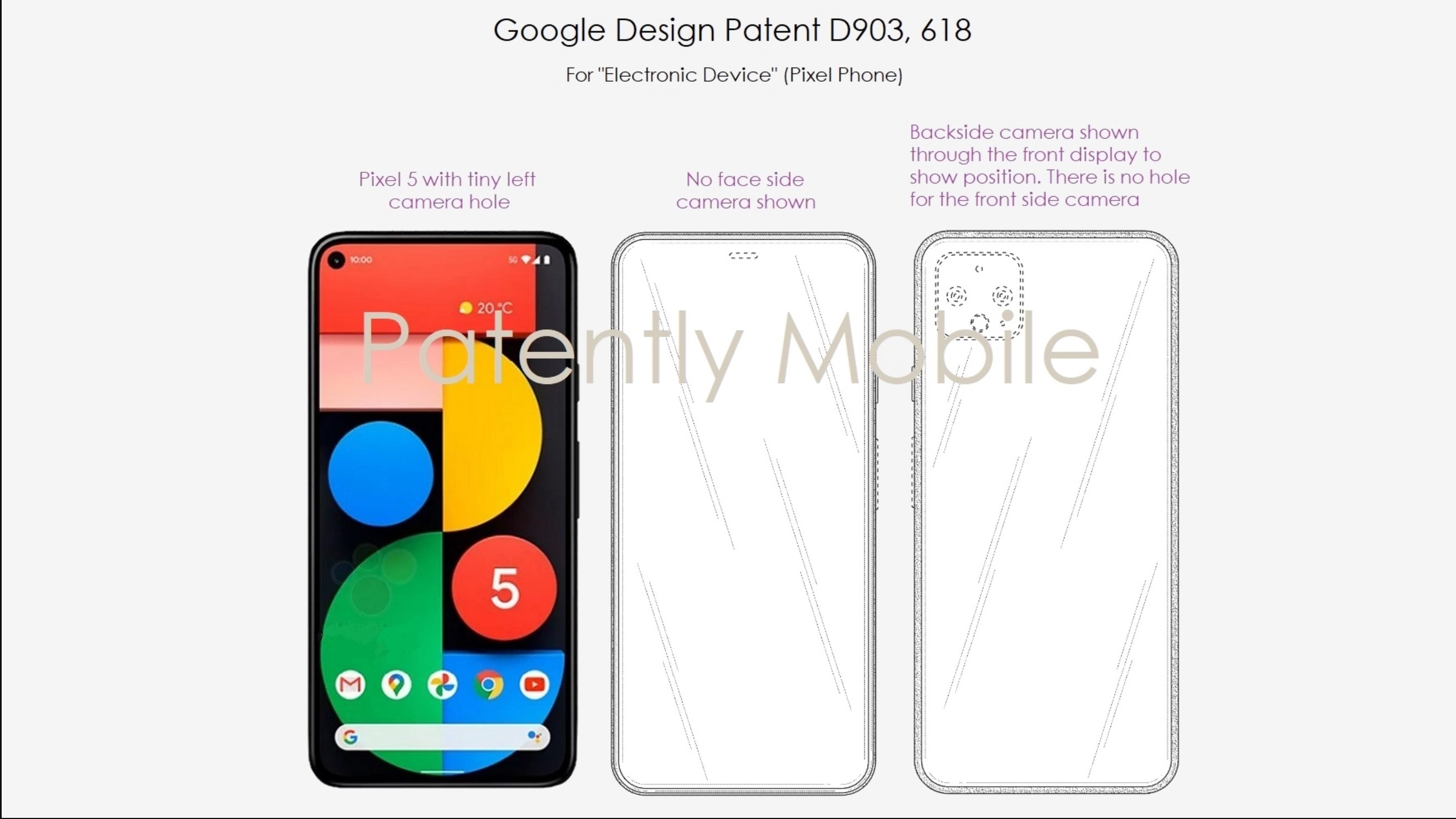
There have been rumors of an under-display camera on the Pixel 6. This is based on a Google patent that showed off what an under-display camera might look like, and it fueled hopes that the feature will appear in the Pixel 6. However the most recent renders of the Pixel 6 from Jon Prosser and OnLeaks show that while Google has moved to a centrally-aligned selfie camera, it’s not an under-display sensor.
Google has confirmed that it will be making some changes to the computational software that powers the cameras on its phone, with those new capabilities appearing on the Pixel phones arriving in the fall. Google says it’s working with image experts so that its cameras do a better job taking accurate photos of people of color. That means adjusting the Auto White balance to prevent over-brightening of darker skin tones and developing more accurate detection for different types of hair, so that hair stands out more from the background of a photo.
Google Pixel 6 design
Google hasn’t been afraid to reinvent the look of the Pixel range throughout its various iterations, so the Pixel 6 could look markedly different compared to its predecessors.
The Pixel 5 was notable for using an aluminum chassis, while smartly incorporating bio-resin plastic to allow the phone to support wireless charging. It’s likely the Pixel 6 will also pick up that design element.
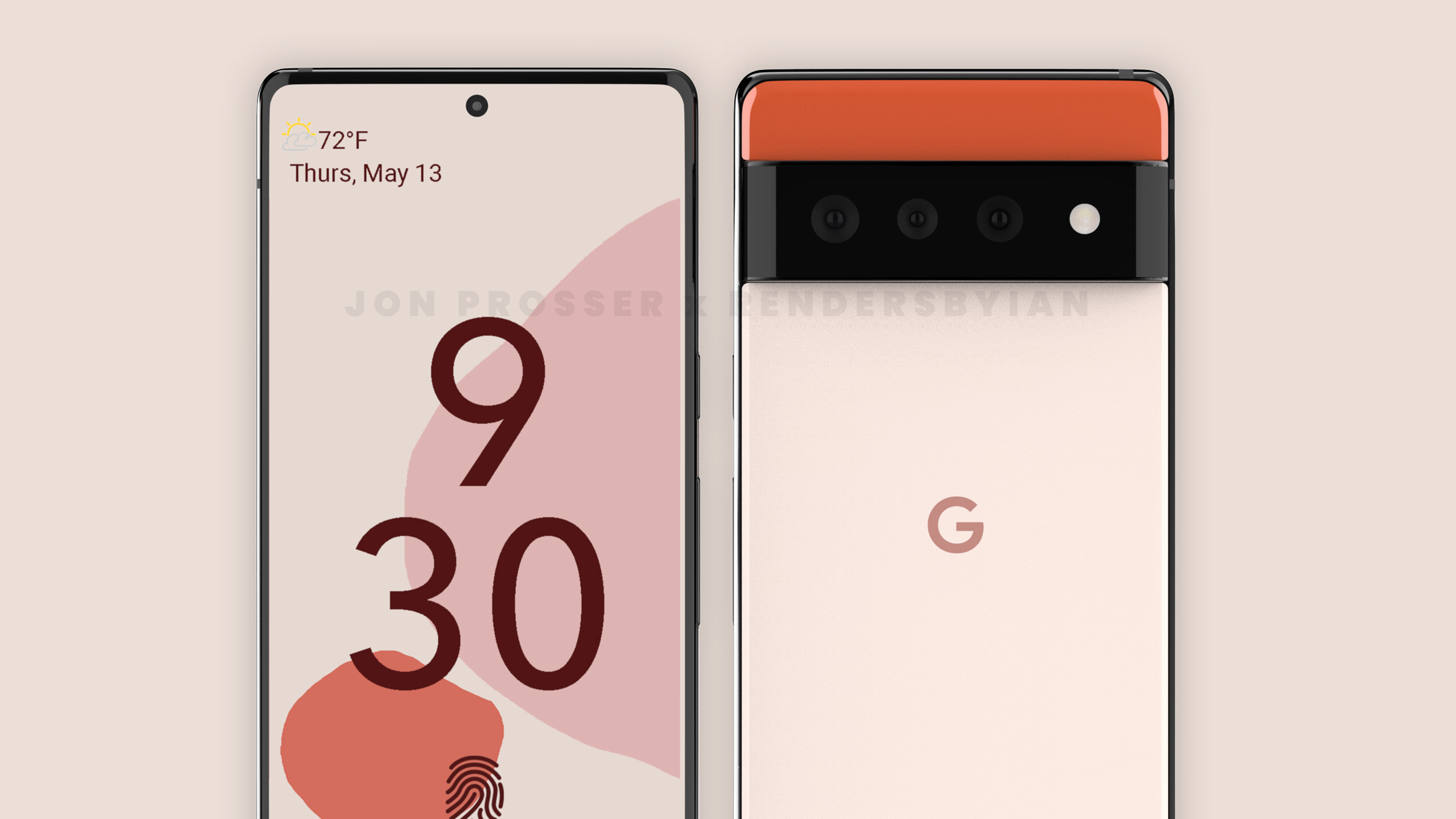
Chunky camera arrays seem to be very much in vogue these days, so we don’t expect Google to attempt to slim down the camera cutout. If anything, Google may take a leaf out of the Galaxy S21 book and figure out a way to make the camera array less prominent with the Pixel 5.
Leaker Jon Prosser revealed renders of the Pixel 6, based on photos he’d received of the actual device. Suffice to say, the supposed design language of the Pixel 6 will be drastically different than we’re used to.
The front of the phone is all screen with a centered hole punch cutout for the selfie camera. These renders also show an in-display fingerprint sensor. Moving around to the back, there’s a bar across the width of the phone for the camera module, with a tertiary accent color above it. Gone is the spartan design we’re used to from Google.
Newer renders from OnLeaks purport to be more accurate than Prosser’s leaks when it comes to measurements. However the basic details are still the same, as you can see below.

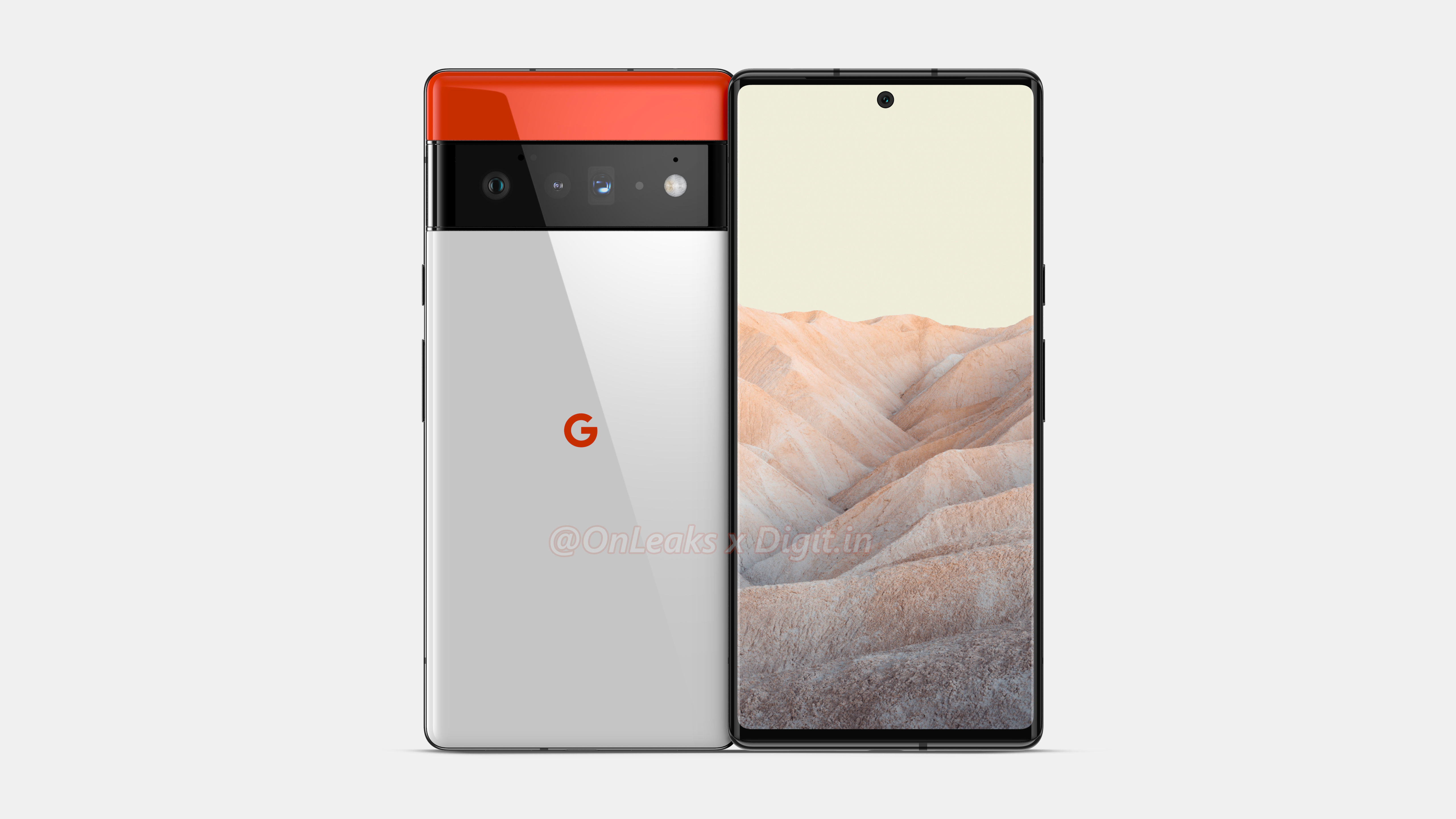
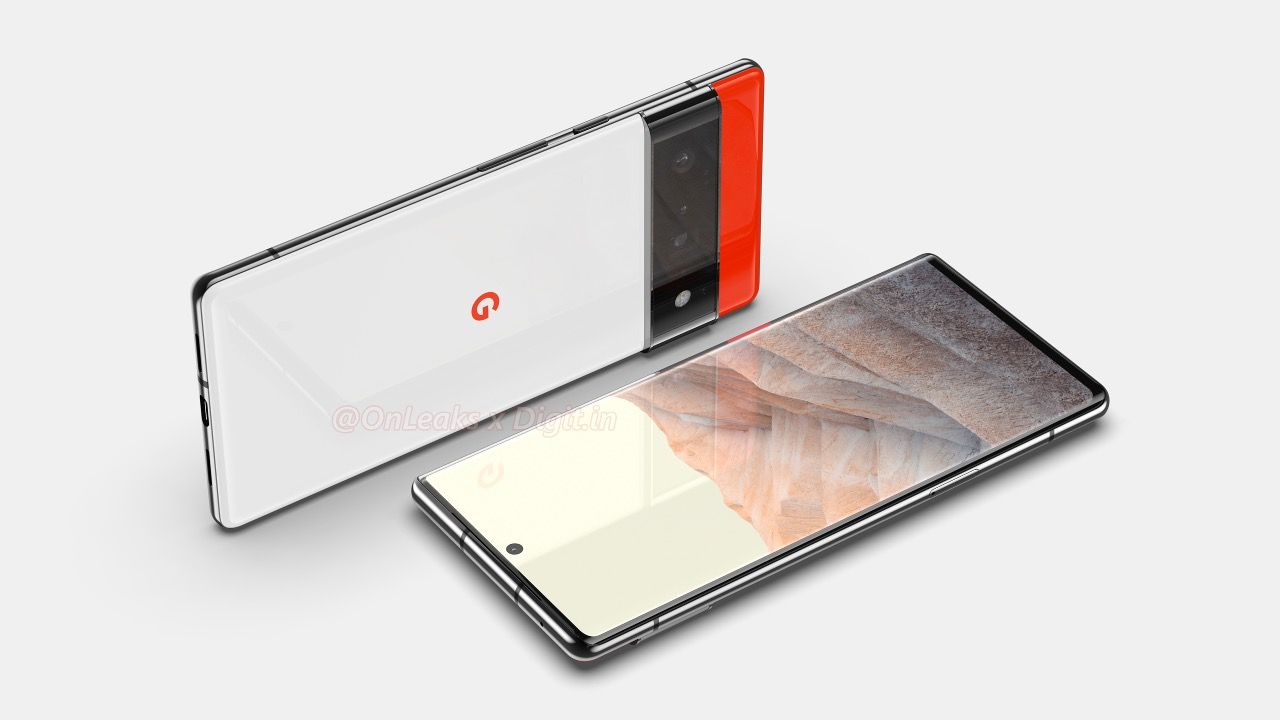
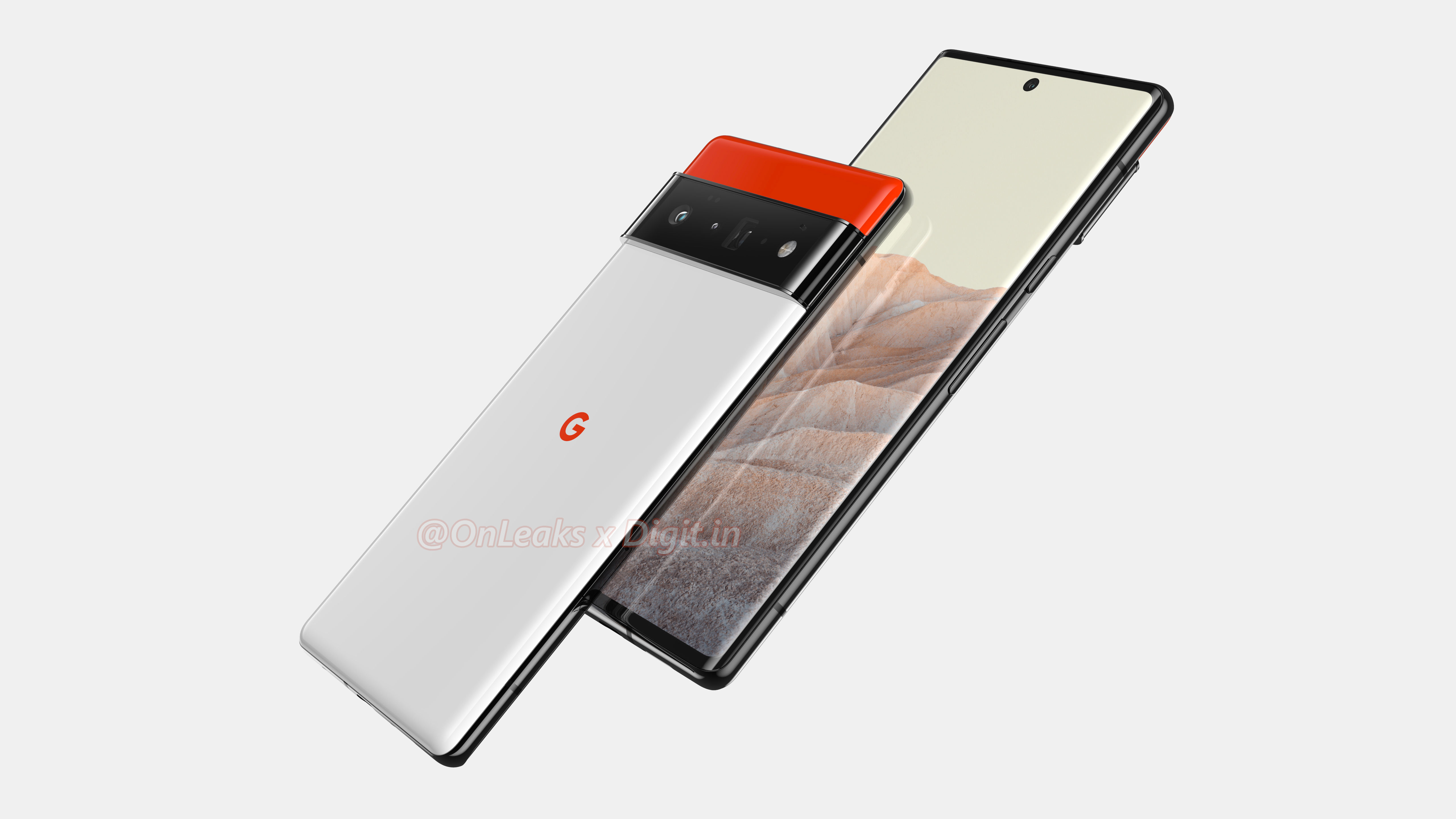
Meanwhile, a video from concept artist Concept Creator has given us a good look at what the new Pixel will look like in the real world — and how it compares to other phones including the Samsung Galaxy S21. Take a look at the video here and see what you think.
Google Pixel 6 display
OnLeaks has provided the basic sizes of the Pixel 6 series’ AMOLED displays. The smaller model measure 6.4 inches and has flat edges, while the larger one is 6.7 inches, and has curved edges. Both will conceal a fingerprint sensor underneath, with the Pixel’s trademark rear scanner now removed.
Weinbach mentioned that both the Pixel 6 and Pixel 6 Pro will have 120Hz refresh rates. The larger phone should have a QHD+ resolution, while we suspect that the smaller device will sport 1080p.
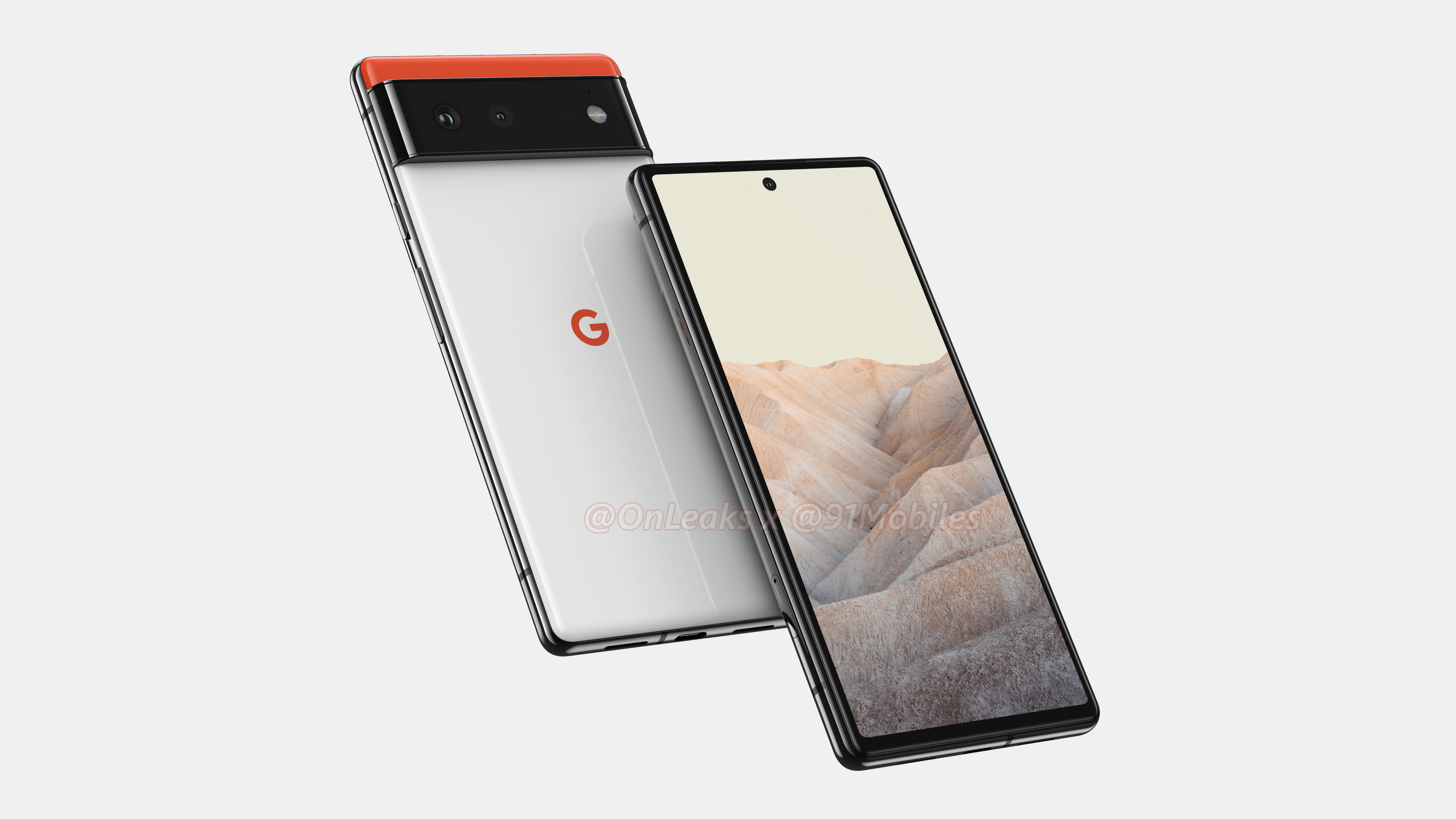
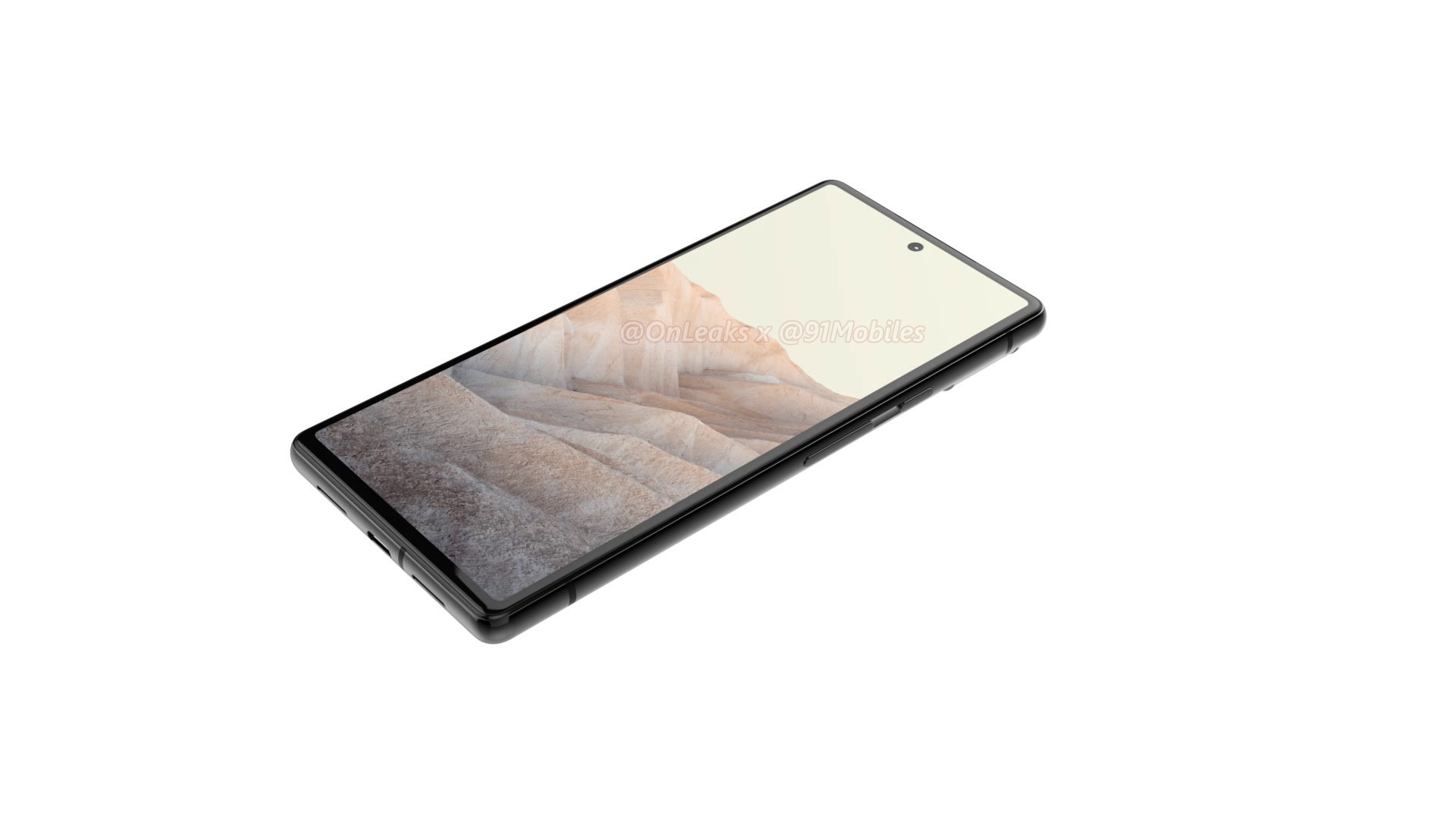
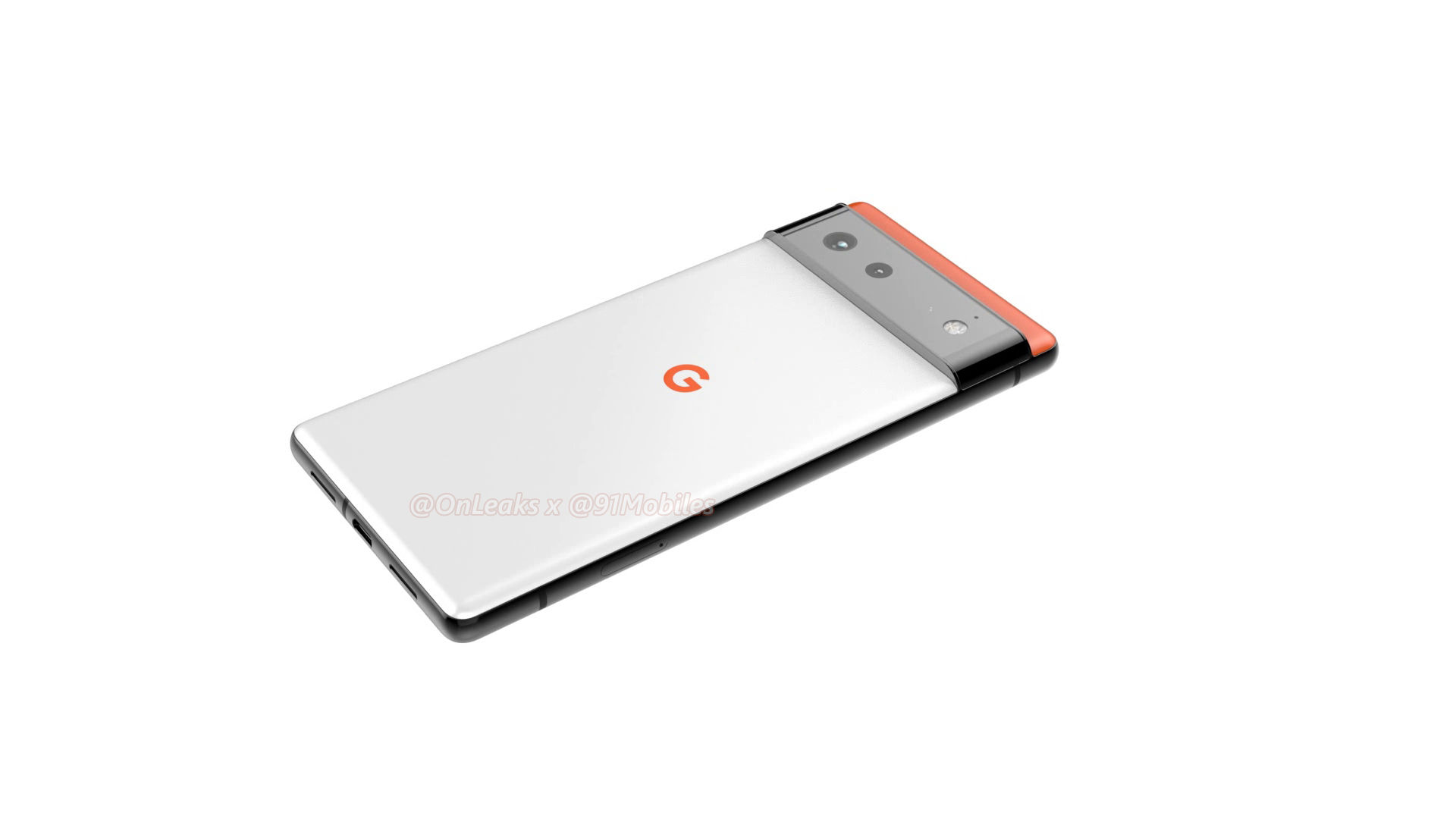
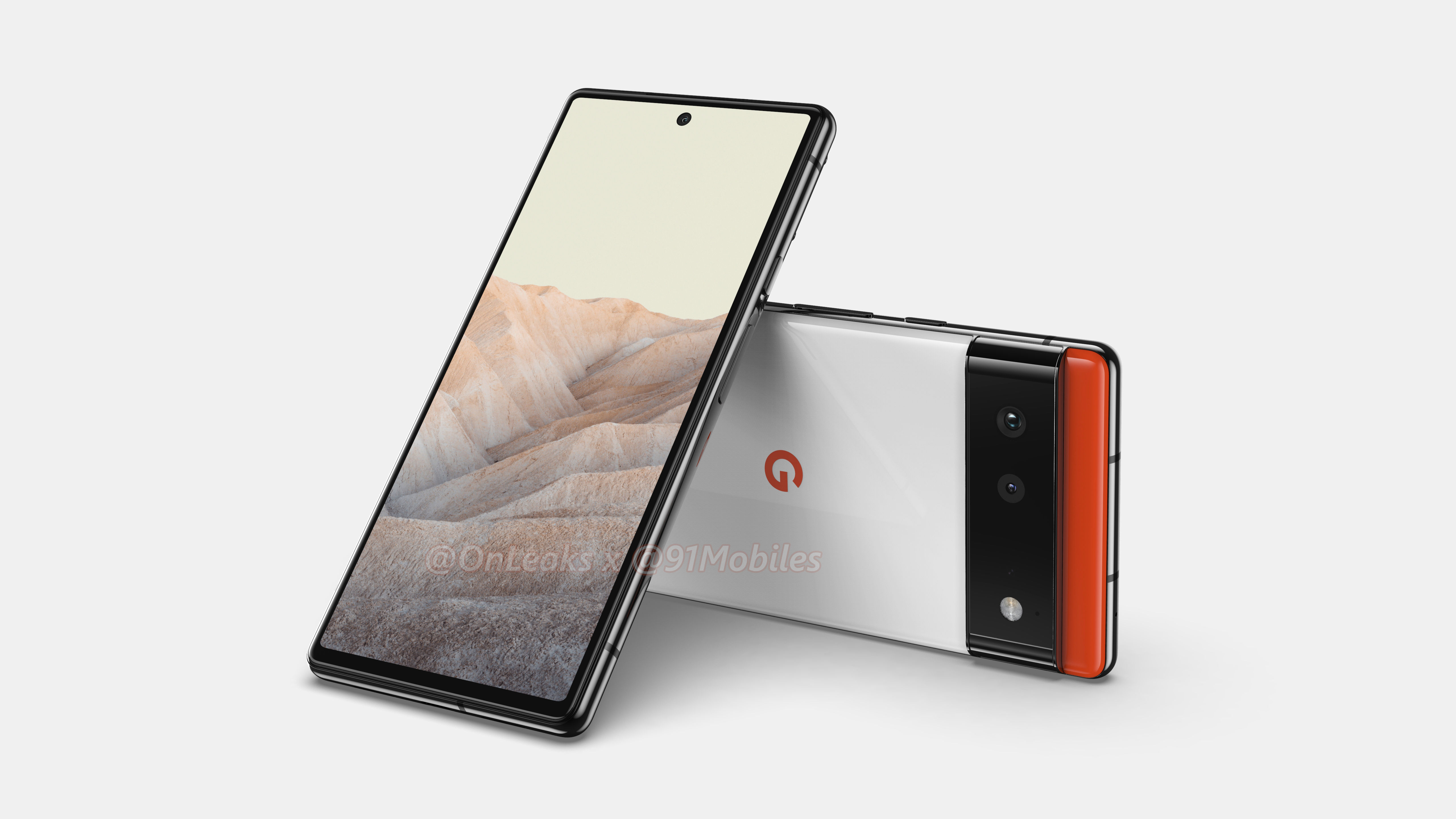
Display refresh rates have been a major focus for smartphone screens as of late, and Google figures to remain part of that trend with the Pixel 6. Google added a faster refresh rate to its flagship phones with the Pixel 4 in 2019, and that’s likely to continue with its new device. The only question is whether Google ups the speed from its current 90Hz to 120Hz for the Pixel 6.
A release Developer Preview of the Android 12 OS, which is due for release this year and the Pixel 6 is almost guaranteed to make use of, has given us a few clues as to what other features the display might offer.
The information comes courtesy of Mishall Rahman, editor-in-chief of XDA, who has been found quite a few tantalizing new details after being able to preview the operating system.
Firstly, facial authentication looks set to make a return. After being included in the Pixel 4, and then dropped for the Pixel 5, it’ll make a welcome inclusion and compete with Apple’s Face ID system. However given there only appears to be a single camera on the front of the Pixel 6, this facial recognition system may be the simpler unsecured kind that many Android phones now offer. It’s convenient, but not as safe as using a fingerprint.
Furthermore. the code also backs up the leak that an under-display fingerprint sensor will be featured on the Pixel 6. This was also mentioned by another report citing the Android 12 beta code regarding an under-display fingerprint sensor that should be coming to Pixel phones.
Google Pixel 6: Should we expect a Pixel 6 XL?
Google typically released two versions of the Pixel, a standard model and an XL version, though that approach ended with the Pixel 5, which is only available as a 6-inch model. To get a bigger screen, you’ve got to turn to the 6.2-inch Pixel 4a 5G. Whether Google goes back to giving us a choice between multiple screen sizes likely depends on how sales of the current models are going.
As noted above, leaked documents offer two code names that are thought to belong to the Pixel 6 — Raven and Oriole. It would seem likely that one of these is the standard Pixel 6 and the other an XL model.
The recent Developer Preview of Android 12 has added further fuel to the fire. Mishaal Rahman (of XDA), revealed that by enabling ‘Silky home’ functionality the system setting UI changes to be more friendly to one-handed use by bringing key buttons, sliders, and toggles closer to the bottom of the screen.
This UI is very similar to Samsung’s One UI, which the company uses for its bigger phones. If Google is designing a UI that is more compatible with single-hand use, that is a strong indication that the tech giants are at least considering launching a more substantial handset in the future.
Of course, these signs are not a guarantee. And even if there is a second Pixel 6 model, Google could just as easily stop work on it as it reportedly did with the Pixel 5 XL.
Furthering the idea of two Pixel 6’s, Prosser also revealed that there will be a standard Pixel 6 with two cameras, and a larger Pixel 6 Pro with three cameras. If he’s right, Google is ditching the “XL” moniker and going with the industry-standard “Pro” one.
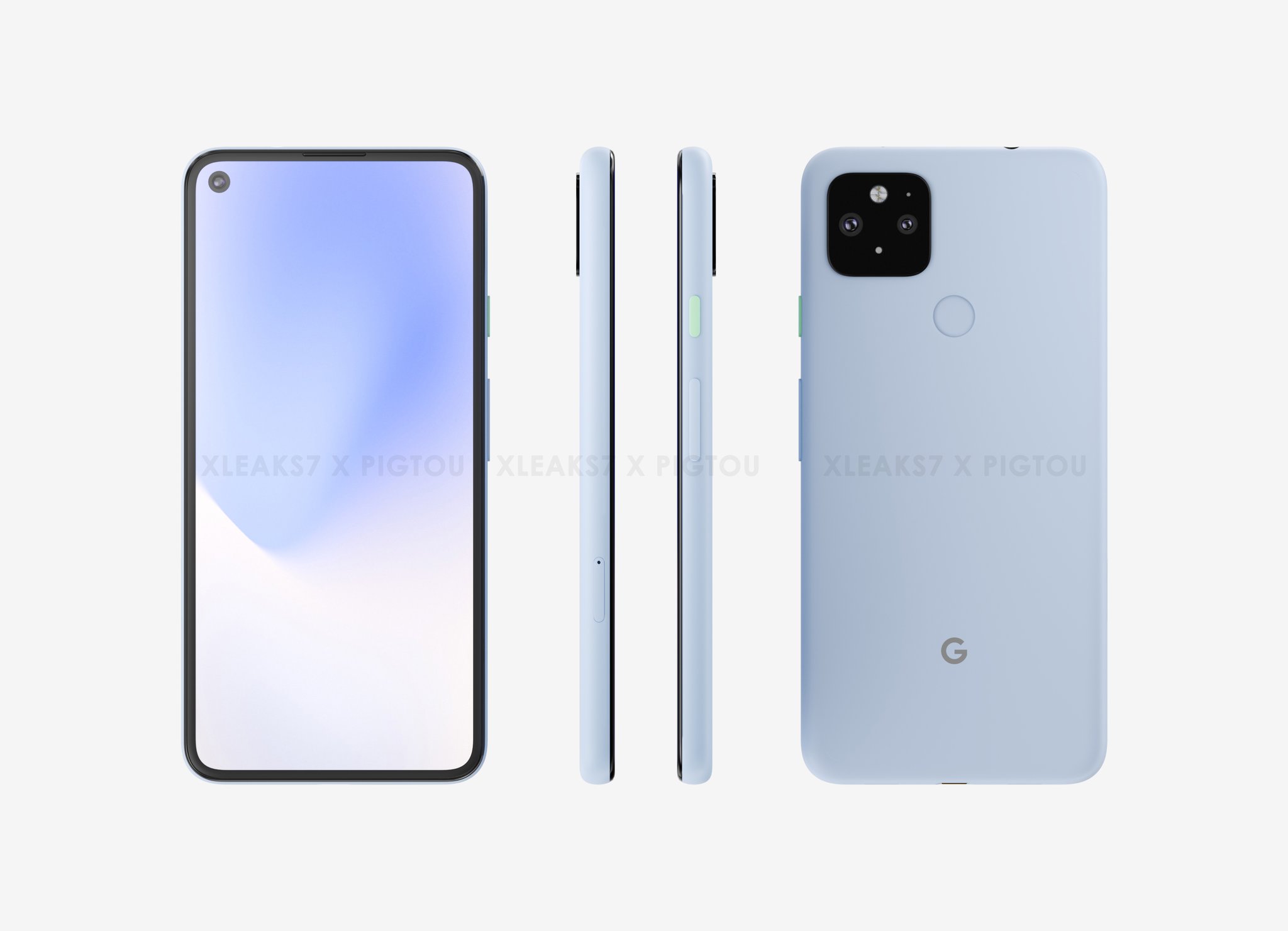
Google Pixel 6 specs: ‘Whitechapel’ chip
Here’s where things get interesting. One of the biggest questions facing Google will be what processor to use in its next flagship. With the Pixel 5, Google opted for the Snapdragon 765G, a capable system-on-chip but nowhere near as powerful as Qualcomm’s 8 Series chipsets, like the Snapdragon 865 that powered many of last year’s top Android phones.
The leading Qualcomm silicon right now is the Snapdragon 888 — it’s what’s powering the Galaxy S21 family as well as the OnePlus 9 series.
However, it looks like Google will go in a completely different direction. About a year ago, rumors surfaced that Google was developing its own chipset with the help of Samsung. And now a new report from 9to5Google claims that those ‘Whitechapel’ chips are ready to use with Google’s phones coming out this fall, meaning that the Pixel 6 will use a Google-designed chipset, much like Apple designs its own chips for the iPhone lineup.
Weinbach talked about Whitechapel, saying that it’ll land between the Snapdragon 888 and the 865 from 2020 in terms of performance. The main draw for Google, however, is the ability to add its own neural processor unit (NPU) and image signal processor (ISP) to the chip. These will power many AI functions, notably improving the Pixel’s renown computational photography chops.
Switching to its own chips would be a big deal for Google — and it’s a move that also carries a lot of risks for the company and its phones.
Google Pixel 6 battery
Previous Pixels have struggled in the battery life department. With a 4,000 mAh battery, the Pixel 5 ran for 9 hours and 29 minutes on its default 90Hz mode in our battery test, which is below average for a smartphone. The Pixel 5 does offer an Adaptive Battery feature to govern which apps draw power.
Google could go with a bigger battery for the Pixel 6, especially if it increases the refresh rate on the phone’s display. (The faster the refresh rate, the bigger the hit on battery life.) With both phones looking to be quite a bit larger than the Pixel 5, the odds of a larger cell seem good.
Recent rumors suggest that the Pixel 6 Pro will have a nice, big 5,000 mAh battery to power its large display. The smaller Pixel 6 might sport a 4,500 mAh battery. Both of these capacities seem like they’d be great, given the past battery life problems on Pixels.
Google Pixel 6: Will there be a charger?
There’s another battery life and charging issue that’s suddenly become relevant for upcoming phones like the Pixel 6 — will it include a charger?
Last fall, Apple became the first phone maker to stop including chargers with its phone, when it shipped all four iPhone 12 models without the accessory in the box. Apple says the move is better for the environment, and while some rival companies rolled their eyes at Apple’s decision, they also followed suit. Samsung doesn’t include a charger with the Galaxy S21 models, either.
Therefore, it wouldn’t be a great surprise to see the Pixel 6 come with little more than just a USB-C charging cable alongside the phone. Best start hoarding those power bricks just in case, as it’s looking like this industry trend is here to stay.
If you feel using wires to charge your phone is too old-fashioned, there’s good news. OnLeaks claims that there will once again be wireless charging available on the Pixel 6. How fast it will be is another matter.
Google Pixel 6: What we want
By the time the Pixel 6 launches, we’ll not only be awash in current phones like the Galaxy S21, but Apple will likely have launched the iPhone 13. (And there could be additional phones from Samsung like a new Galaxy Z Fold model.) Given that level of competition, Google has its work cut out for it to make the Pixel 6 stand out from the crowd.
Here’s how we think Google can pull that off.
Three camera setup
Offering three cameras is quickly becoming something of an industry-standard (at least in flagship models), so Google’s Pixel phones are an outlier with just two rear lenses. The Pixel 6 could rectify this omission by offering a trio of cameras — a main shooter, telephoto and ultrawide camera combination. Plus, it’ll keep the Pixel’s reputation as one of the best camera phones very much intact.
120Hz display
The Pixel 5’s 90Hz refresh rate is nice, but a 120Hz would be even better and we’d love to see that featured on the Pixel 6. Especially with services such as Microsoft’s Xbox Cloud Gaming (formerly known as xCloud) bringing big-budget game streaming to phones, that higher refresh rate will really take games up a notch.
HDMI support
We appreciate that Google wants to encourage people to buy a Chromecast, but there is no excuse for the Pixel 6 not to support HDMI video out via a USB-C to HDMI connector. Being able to hook your phone up to a TV in this way is super convenient, especially when traveling. Having to use a Chromecast (not to mention having to buy one in the first place) to get content from your phone to a TV feels so archaic, so this is something that Google could easily fix.
For all the latest Technology News Click Here
For the latest news and updates, follow us on Google News.
